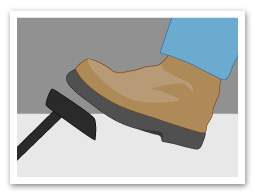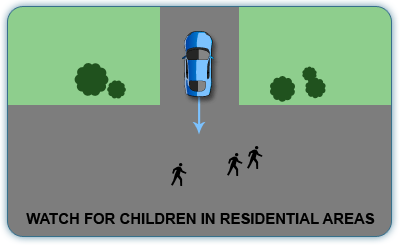Here’s something funny: January 31st is National Backward Day! There are many ways to have backward fun. Try making dinner for breakfast, or swapping the order in which you make your cereal (milk first? Cereal first? Switch it up!). One way of going backward you’re probably familiar with is driving in reverse. For new drivers especially, backing up can feel intimidating, but once you get the hang of it, it will feel as natural as driving forward. Because it’s National Backward Day, we have some tips for helping you safely drive in reverse.
1. Cover the brake.
It can be tempting to back up as quickly as possible, especially if you’re in a rush to get to your destination. It’s important to back up slowly and carefully. Instead of leaving your foot on the gas, you should be covering the brake. "Covering the brake" means to keep your right foot hovered over the brake pedal. If you need to make a quick stop because there’s a hazard behind you as you’re backing up, you’ll be able to stop quickly with your foot in this position. A quick stop can make all the difference.

2. Check for hazards.
This brings us to the next point: be on the alert for hazards. Driving in reverse is difficult because it’s hard for us to see what’s behind us. When you’re pulling out of a parking space, for example, it can be difficult to tell if there’s a pedestrian approaching, unless you’re specifically looking out for one. Unfortunately, we can’t count on everyone else to pay attention, especially in crowded parking lots. Turn around in your seat and look directly behind you, as well as left and right. If you see a pedestrian approaching, try to make eye contact with them. If they stop and wave you forward, it’s probably safe to back up. Otherwise, wait until the roadway is clear before reversing.
Children in particular are at risk in this situation, because they are small and unpredictable. Be extremely cautious when children are around, whether you’re in a parking lot or in a residential area. If you’re walking with a child in a parking lot or near a roadway, keep them close by your side, even if there isn’t much traffic around.

3. Do not back up while distracted.
Backing up requires your full attention. Don’t try to back up your vehicle while doing another task, like looking for a playlist to queue up, entering an address in your GPS, or eating a snack. Do these things before you back up, not while you’re backing up.
We hope you use National Backward Day as an opportunity to share these tips with a driver who needs them! If you like learning about traffic safety topics, click here to visit our website! We offer online courses to help drivers in a variety of situations, from driver education for new drivers, to insurance discounts, and even to dismiss a ticket!
Here’s something funny: January 31st is National Backward Day! There are many ways to have backward fun. Try making dinner for breakfast, or swapping the order in which you make your cereal (milk first? Cereal first? Switch it up!). One way of going backward you’re probably familiar with is driving in reverse. For new drivers especially, backing up can feel intimidating, but once you get the hang of it, it will feel as natural as driving forward. Because it’s National Backward Day, we have some tips for helping you safely drive in reverse.